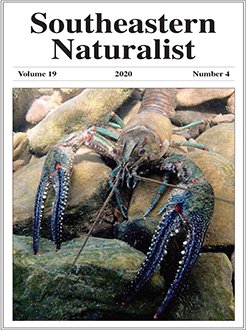As scatterhoarders, Sciurus carolinensis (Eastern Gray Squirrel) usually rely on food they buried during fall to survive cold winter months. However, the range of this species includes areas of the southeastern United States where winter flooding commonly restricts access to buried food during the recovery season. In this study, we investigated the effects of winter flooding on the diet of Eastern Gray Squirrels in bottomland hardwood forests of west-central Alabama. We examined the diet of 42 Eastern Gray Squirrels through DNA analysis of stomach contents collected during fall (September–November) 2016 and winter (December–February) 2015–2016, 2016–2017, and 2018–2019. Eastern Gray Squirrels ate 21 different types of plants, with 6 principal foods (>1% of any squirrel's stomach contents) during fall and 12 principal foods during winter. Throughout both seasons, Juglandaceae (walnut) and Quercus spp. (oak) were the most important foods and together made up 94.1% of the fall diet and an average of 78.6% of the winter diet. In contrast to other studies, we found more varied diets during winter (12 primary foods eaten) than fall (6). Additionally, a majority of the plant types consumed during winter at our study area were not hard-mast plants, and many had not been previously recorded as part of the diet of the Eastern Gray Squirrel. Our results suggest Eastern Gray Squirrels cope with reduced availability of scatterhoarded food due to winter flooding by increasing the diversity of foods they eat to include more herbaceous plants.
How to translate text using browser tools
8 December 2020
Fall and Winter Diets of Eastern Gray Squirrels in a Seasonally Flooded Ecosystem in Alabama
Sarah B. Wilson,
Todd D. Steury,
Robert A. Gitzen,
Stephen S. Ditchkoff
ACCESS THE FULL ARTICLE

Southeastern Naturalist
Vol. 19 • No. 4
December 2020
Vol. 19 • No. 4
December 2020




